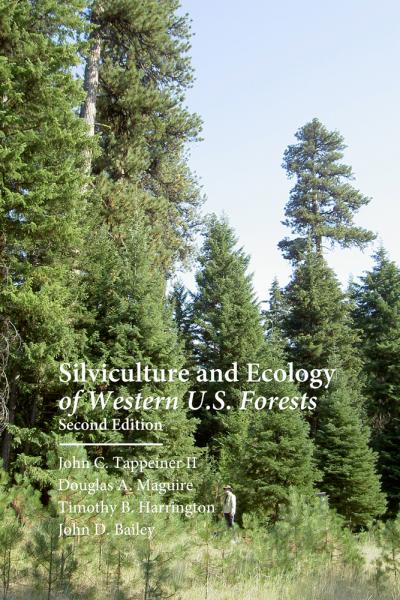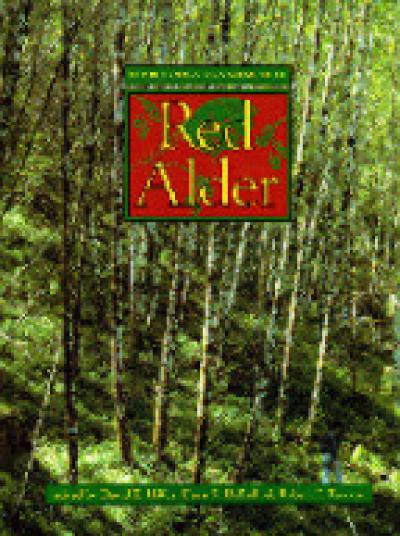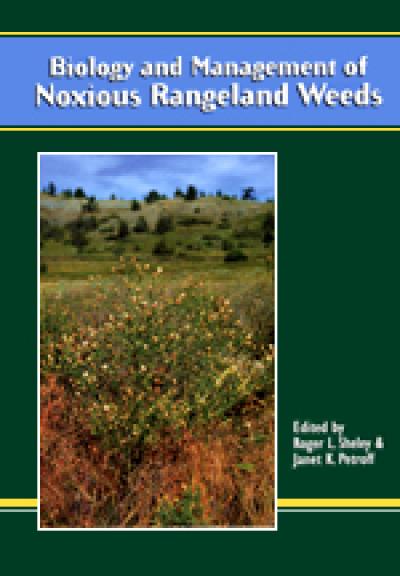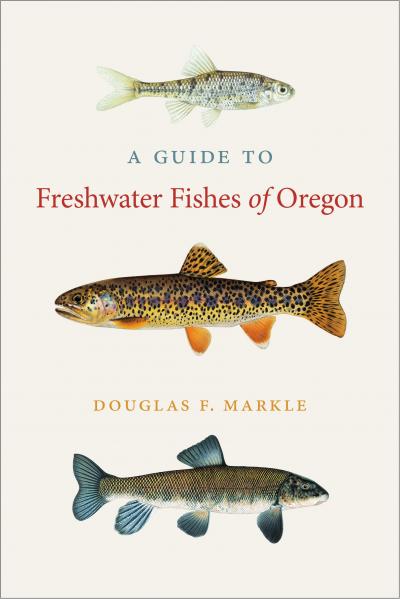
Forest and Stream Management in the Oregon Coast Range
Thomas A. Spies, Stephen D. Hobbs, Rebecca L. Johnson, John P. Hayes, John C. Tappeiner II, Gordon H. Reeves, and Gail E. Wells
The Oregon Coast Range is an area that contains a diversity of plant and animal life and a wealth of natural resources. However, faced with a growing population and increasing demands on these resources, land managers today feel the need for new policies and practices aimed at ensuring their sustainability. Until recently there has been little scientific knowledge upon which to base these new approaches.
In 1987 a major cooperative research effort called the Coastal Oregon Productivity Enhancement (COPE) Program was launched to fill this void. Forest and Stream Management in the Oregon Coast Range is the capstone of this effort and the synthesis of years of collaborative research.
The book's ten chapters, written by scientists from leading research institutions, offer a thorough grounding in Coast Range geophysical processes, plant community ecology and dynamics, fisheries, wildlife, forest diseases, silviculture, and timber harvest operations. The book also describes a variety of management strategies and practices appropriate to the area and discusses the social and economic dimensions of sustainable management.
Unlike other books dealing with natural resource management, this volume focuses exclusively on the Oregon Coast Range, an area of singular ecological assets and high economic importance. This has allowed the authors to provide specific and detailed information about the Coast Range and its particular resources and challenges.
Written primarily for managers and resource specialists, the book will also appeal to resource scientists, forest landowners, the conservation community, and university students interested in forestry, fisheries, and wildlife sciences.
Coastal Oregon Productivity Enhancement Program
This book is a result of the Coastal Oregon Productivity Enhancement (COPE) Program, a cooperative research and education effort between federal and state agencies, the forest products industry, city, county, and tribal governments, and small woodland owners.
From 1987 to 1999, COPE sponsored 60 studies involving 130 researchers from 14 organizations and produced more than 300 publications.
About the author
Thomas A. Spies is a Research Ecologist for the USDA Forest Service, Pacific Northwest Research Station, in Corvallis, Oregon.
Read more about this author
Stephen D. Hobbs is a Professor and Assistant Department Head in the Department of Forest Science, College of Forestry, at Oregon State University.
Read more about this author
Rebecca L. Johnson is Associate Dean for Academic Affairs in the College of Forestry at Oregon State University.
Read more about this author
John P. Hayes is an Associate Professor of Wildlife Ecology in the Department of Forest Science, College of Forestry, at Oregon State University.
Read more about this author
John C. Tappeiner II is Professor Emeritus in the Department of Forest Engineering, Resources, and Management at Oregon State University.
Read more about this author
GORDON H. REEVES is a retired fish biologist, Pacific Northwest Research Station of the US Forest Service.
Read more about this author
Gail Wells is the author of The Tillamook: A Created Forest Comes of Age and co-author of Lewis and Clark Meet Oregon’s Forests. She worked for Oregon State University’s College of Forestry for 13 years as editor, writer, and finally director of Forestry Communications. Since 2002, she has been a freelance writer and editor specializing in history and natural resources. She lives in Corvallis, Oregon.
Read more about this author
Acknowledgments
The Authors
1: Introduction
Stephen D. Hobbs and Thomas A. Spies
A Wealth of New Information
Overview of the Oregon Coast Range
Choices
Key Principles
Literature Cited
2: Forest and Stream Management in the Oregon
Rebecca L. Johnson and George Stankey
Introduction
Shifting conceptions of forest resources
The social acceptability of forest practices and conditions
Political power and organizational authority
Sociopolitical Organization of the Oregon Coast Range
Geopolitical boundaries
Communities of interest
Cultural boundaries
Institutional boundaries
The Changing Oregon Coast
Changing population
Population growth
Demographic structure
Changing patterns of land use
Changing economy
Income and employment
Recreation and tourism industry
Changing education levels
Public values about natural resources
Interactions Between Society and Forest Management
Changing forest management and policy: implications for society
Changling demographics: implications for forest management
Value changes along the Oregon coast: implications for forest management
Summary and Conclusions
Future Research Needs
Literature Cited
3: The Ecological Basis of Forest Ecosystem Management in the Oregon Coast Range
Thomas A. Spies, David E. Hibbs, Janet L. Ohmann, Gordon H. Reeves, Robert J. Pabst, Frederick J. Swanson, Cathy Whitlock, Julia A. Jones, Beverly C. Wemple, Laurie A. Parendes, and Barbara A. Schrader
Introduction
Ecosystem Patterns and History
Regional environment
Forest ecosystem patterns
Coast Range vegetation in geologic history
The role of deciduous vegetation
Riparian forests
Productivity of Coast Range Forest and Stream Ecosystems
Ecological Forces of Disturbance and Development
Forest disturbances
Tree death and decomposition
Forest development
Influence of human activities
Watershed and Landscape-scale Processes
Influence of roads on ecosystem function at multiple scales
Aquatic-terrestrial linkages
Natural processes as a foundation for management
Literature Cited
4. Fish and Aquatic Ecosystems of the Oregon Coast Range
Gordon H. Reeves, Kelly M. Burnett, and Stanley V. Gregory
Introduction
The Fish Fauna of the Oregon Coast Range
Distribution of Fish in Coast Range Rivers and Streams
Organization of rivers and stream systems
Watersheds
Reaches
Habitat units
Seasonal distribution
Spring
Summer
Fall
Winter
Human Impacts on Fish and Fish Habitat
Ecosystem Restoration
Current approaches
Ecosystem approach
The Future: Ecosystem and Landscape Management
A case study
Conclusions
A new disturbance regime
Literature Cited
5: Ecology and Management of Wildlife and Their Habitats in the Oregon Coast Range
John P. Hayes and Joan C. Hagar
The Coast Range Supports a Diversity of Animal Species
Habitat Components Within a Stand Influence the Presence and Abundance of Wildlife
Dead wood
Large and unique trees
Special features
Stand-level Characteristics Influence the Presence and Abundance of Wildlife
Tree density and distribution
Managing stands to benefit wildlife
Riparian Areas Are of Special Management and Ecological Concern
Wildlife communities along an inter-riparian gradient
Wildlife communities along an intra-riparian gradient
Managing riparian areas to benefit wildlife
Summary and Conclusions
Literature Cited
6: Timber Harvesting to Enhance Multiple Resources
Loren D. Kellogg, Ginger V. Milota, and Ben Stringham
Introduction
Review of Harvesting Systems in the Oregon Coast Range
Felling
Cable systems
Highlead
Skyline
Aerial systems
Ground-based systems
Mechanized systems
Harvest Planning to Achieve Forest and Stream Resource Objectives
Even-age Silvicultural Systems
Appropriate harvesting systems
Clearcutting
Thinning
Harvest planning and layout approaches
Clearcutting
Thinning
Production and cost information
Uneven-age Silvicultural Systems
Appropriate harvesting systems
Harvest planning and layout approaches
Production and cost information
Minimizing Damage to Residual Trees
Monitoring of stand damage
Harvesting approaches that minimize stand damage
Skyline systems
Tractor systems
Mechanized cut-to-length systems
Timber Harvesting for Riparian-area Management
Appropriate harvesting systems
Harvest planning and layout approaches
A Case Study of Timber Harvesting for Active Riparian Management
Summary
Literature Cited
7: Silviculture of Oregon Coast Range Forests
J.C. Tappeiner II, W.H. Emmingham, and D.E. Hibbs
What is Silviculture and Why is it Important?
Regeneration of Oregon Coast Range Forests
Natural regeneration
Artificial regeneration
Natural diversity in young managed stands
Patterns of Stand Development
The Importance of Shrubs and Hardwoods
Influence of Stand Density on Tree and Stand Characteristics
Options for Managing Young Stands
Controlling stand density when trees are young
Thinning to achieve a variety of objectives
Producing stands with old-growth characteristics
Regeneration of understory tree species
uneven-age silvicultural systems in Oregon Coast Range forest management
Managing Hardwoods in the Oregon Coast Range
Regeneration
Thinning
Species Mixes
Poplar plantations
Silviculture of Riparian Stands in the Coast Range
Basing management strategies for riparian areas on ecological processes
Silviculture practices to meet riparian-area management objectives
Conclusions
Literature Cited
8: Major Forest Diseases of the Oregon Coast Range and their Management
Walter G. Thies and Ellen Michaels Goheen
Introduction
Important Root Diseases
Laminated root rot
Basic biology
Management strategies
Port-Orford-cedar root disease
Basic biology
Management strategies
Black stain root disease
Basic biology
Management strategies
Annosus root disease
Basic biology
Management strategies
Armillaria root disease
Basic biology
Management strategies
Other Forest Diseases
Western hemlock dwarf mistletoe
Basic biology
Management strategies
White pine blister rust
Basic biology
Management strategies
Swiss needle cast
Basic biology
Management strategies
Common stem decays
Basic biology
Management strategies
Special Concerns for Disease Management
Planning
Topics for research
Biology
Management
Summary and Conclusions
Epilogue
Literature Cited
9: Landslides, Surface Erosion, and Forest Operations in the Oregon Coast Range
Arne E. Skaugset, Gordon H. Reeves, and Richard F. Keim
Introduction
Physical Setting of the Oregon Coast Range
Geology
Hydrology
Landslides and Surface Erosion in Unmanaged Coast Range Forests
Geomorphic context for debris flows
Mechanistic context for debris flows
Slope-stability analysis
Soil strength
Root strength
Groundwater response to rainfall on hillslopes
Debris flows and aquatic habitat
Landslides and Surface Erosion in Managed Coast Range Forests
Surface Erosion
Surface Erosion from harvest units
Dry ravel
Infiltration-limited surface erosion
Surface erosion from roads and landings
Effect of forest-management activities on debris slides and flows
In-unit landslides
Road-related landslides
The effect of forestry on debris flows
Prevention and Mitigation of Accelerated Erosion in a Managed Coast Range Forest
Best management practices and accelerated erosion
Best management practices and debris slides and flows
Watershed management and debris flows
Summary
Literature Cited
10: Moving toward Sustainability
Stephen D. Hobbs, John P. Hayes, Rebecca L. Johnson, Gordon H. Reeves, Thomas A. Spies, and John C. Tappeiner II
Introduction
Integrated Resource Management, Sustainability, and Biological Diversity
Integrated resource management
Sustainability
The conservation of biological diversity
Changing Realities in the Oregon Coast Range
Forest conditions
Federal forests
State of Oregon forests
Industrial forests
Nonindustrial forests
Other influences
Stream Conditions
Challenges Facing Policy Makers
Globalization, population growth, and demands on resources
The public values, private-property rights debate
Conflicting policies and legal requirements
Establishing a framework for discussion
Summary
Literature
Conversion Factors
Glossary
Species List
Index




